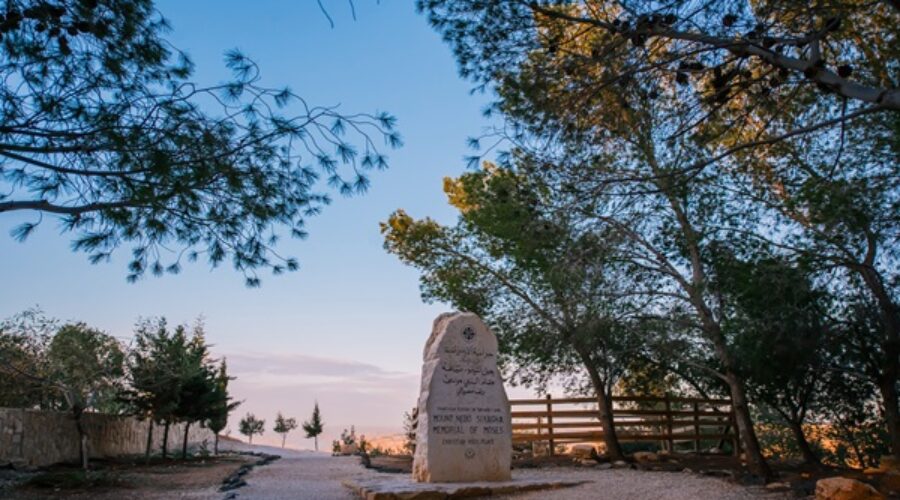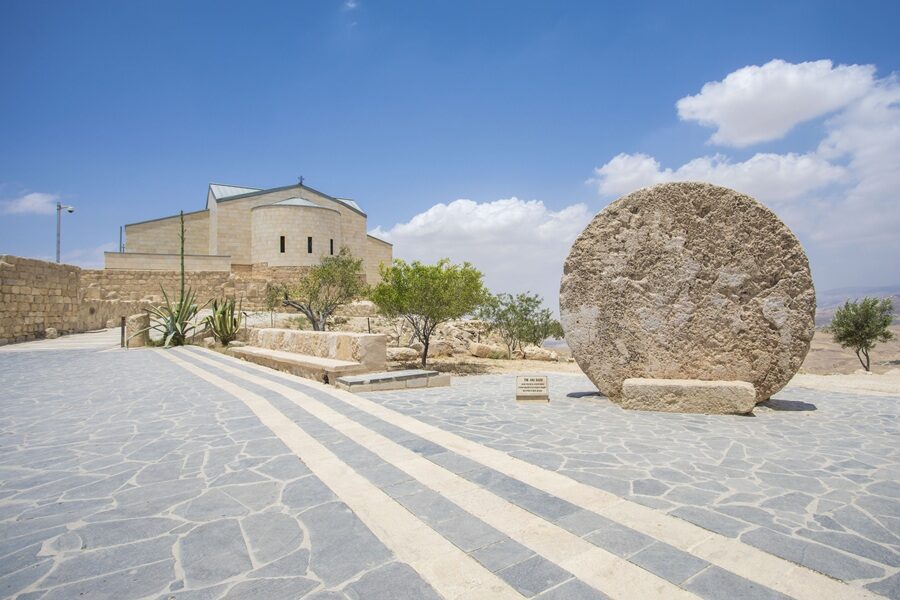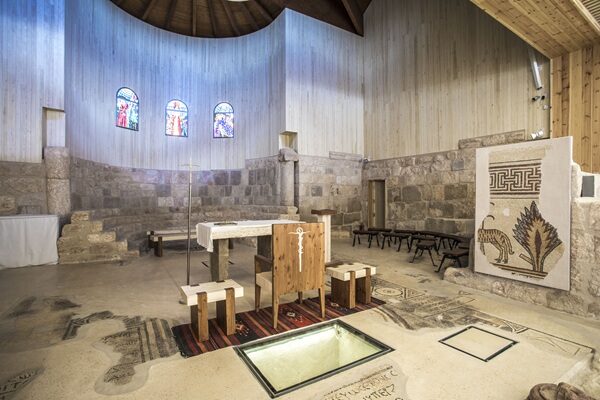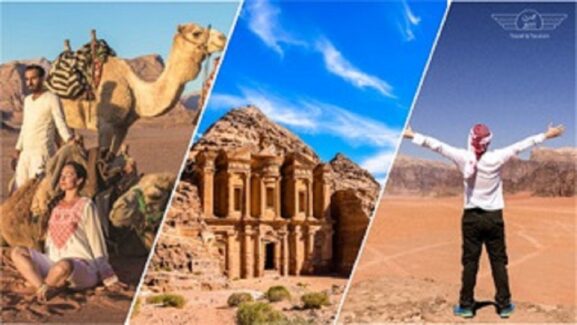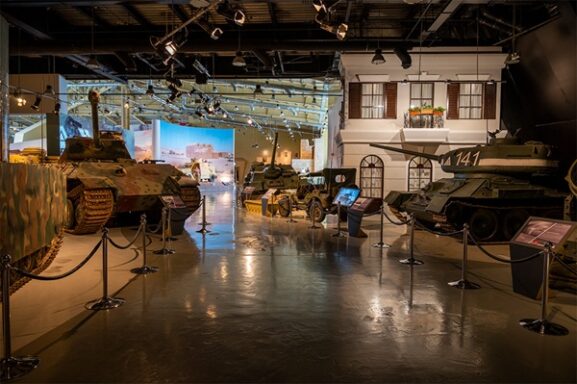Mount Nebo Jordan – What to See, How to Visit & Travel Tips for 2025
Why Mount Nebo matters
Mount Nebo is one of Jordan’s most meaningful hilltops. According to tradition, this is where the Prophet Moses stood and viewed the Promised Land before passing away, and where a church and monastery were later built in his memory. From the ridge, you look across the Jordan Valley to the Dead Sea—and on the clearest days, toward Jericho and even Jerusalem.
Quick facts
- Location: Western highlands of Madaba Governorate, about 10 km from Madaba and roughly 30–40 km from Amman.
- Elevation: ~800 m above sea level (part of the Abarim range).
- Custodian: The Custody of the Holy Land (Franciscans) care for the sanctuary.
- Highlights: Memorial Church of Moses, world-class Byzantine mosaics, Brazen Serpent sculpture, panoramic viewpoints.
What you’ll see
1) The Memorial Church of Moses
The heart of the site is a modern shelter-church that protects a 4th–6th-century basilica. Inside, you’ll find exquisite mosaic floors—hunting scenes, animals, geometric panels—preserved and displayed with care. The structure lets you appreciate the archaeology while keeping the space a living sanctuary for worship.
2) The Brazen Serpent (the “Serpentine Cross”)
Steps from the viewpoint stands a tall twisting bronze sculpture, inspired by the Biblical account of Moses lifting a serpent in the wilderness and symbolically linked to the Cross. It’s become the visual icon of Mount Nebo and a favorite photo stop.
3) Panoramic viewpoint
On clear days you’ll read the landscape like a relief map: the Dead Sea shimmering below, the Jordan River valley, Jericho’s oasis, and far ridgelines beyond. A stone plaque on the terrace points to the directions of key cities and distances. (Visibility varies with haze and weather—mornings after a cool front can be crystal.)
4) La Storia Tourism Complex (nearby)
Down the road, La Storia’s museum exhibits and mosaic displays give context to Madaba’s famous mosaic tradition and regional sacred history—an easy add-on if you’re basing in Madaba.
How to plan your visit
Getting there from Amman or Madaba
- From Amman (drive): Plan ~35–45 km / 40–60 minutes depending on traffic and route. Private car, taxi, or rideshare is simplest; many visitors combine Mount Nebo with Madaba and/or the Dead Sea as a half-day loop.
- From Madaba: It’s an easy ~10 km uphill drive (15–20 minutes). Local taxis know the run; negotiate a wait-and-return fare if you want flexibility.
- Tours: Day trips and multi-site tours frequently package Mount Nebo with Madaba, the Dead Sea, or Bethany Beyond the Jordan—useful if you don’t want to drive.
Opening hours & tickets
- Hours: The sanctuary generally keeps daytime visiting hours that vary by season; special services (e.g., feast days, Christmas Mass) may affect access. Always check on-site posted times on arrival. (As a living religious site, schedules can change.)
- Entry fee: Expect a small cash fee at the gate (recent traveler reports cite ~2–3 JOD; card facilities may not always be available). Bring small bills.
- How long to allow: Most travelers spend 45–90 minutes including the church, mosaics, photo stops, and terrace.
Dress & etiquette
Mount Nebo is an active Christian sanctuary overseen by the Franciscans. Dress modestly (shoulders/knees covered), remove hats inside the church, and keep voices low when services are in progress.
When to go (and why “clear air” beats golden hour)
- Morning after a cool front offers your best shot at long-range views toward Jericho/Jerusalem; summer afternoons can be hazy.
- Sunset is beautiful over the Dead Sea basin—just arrive 60–90 minutes before closing to see the church and mosaics first.
- Shoulder seasons (Mar–May, Sep–Nov) bring milder temps and clearer skies versus mid-summer glare.
Smart pairing: build a perfect half-day
- Madaba (St George’s Church & the Map): The 6th-century mosaic map makes a natural companion to Nebo’s mosaics—history meets cartography.
- Dead Sea swim: Drop down from the ridge to float before sunset—an iconic Jordan double-feature.
- Bethany Beyond the Jordan (Al-Maghtas): For pilgrimage-focused days, add the Baptism Site (UNESCO).
These combos mirror how major tour operators structure their days, and they match traveler expectations coming from Amman.
A short, human history (for context)
The ridge we call Mount Nebo (part of the Abarim) rises around 800 m above the Jordan Valley. Early Christians venerated the peak as the place of Moses’ final vision; by the 4th century a small monastery and then a basilica were built here. The site later fell quiet, then was purchased and painstakingly excavated by the Franciscans in the 20th century; the modern shelter-church protects those layers today.
Photography & on-site tips
- Wide + telephoto: Wide angles for the terrace; a 70–200mm (or strong phone zoom) compresses Jericho-and-beyond on clear days.
- Read the floor: Inside the church, take time with the mosaic panels—look for hunters, animals, and geometric borders.
- Wind & sun: The terrace is exposed; bring a hat and sunscreen year-round.
- Quiet windows: Large coaches tend to pulse mid-morning; arriving at opening or later in the afternoon can be calmer.
Accessibility & facilities
The sanctuary precinct includes paths and ramps; surfaces are mostly level but can be uneven near archaeological edges. Toilets and a small shop/café are typically available. If mobility is a concern, a taxi can drop you close to the entrance.
Sample itineraries
Express (from Amman): Amman → Mount Nebo → Madaba (St George & lunch) → Dead Sea float → Amman.
Pilgrim focus: Madaba → Mount Nebo (church & prayer time) → Bethany Beyond the Jordan → evening in Madaba.
Jordan classic: Combine Nebo/Madaba on Day 1, Jerash another morning, Petra and Wadi Rum later in the trip.
FAQs
What is Mount Nebo famous for in Jordan?
Mount Nebo is known as the place where the Prophet Moses stood to view the Promised Land before he died. Today, it’s a sacred Christian pilgrimage site with a memorial church, ancient mosaics, and breathtaking views across the Jordan Valley and Dead Sea.
Where is Mount Nebo located in Jordan?
Mount Nebo lies about 10 km west of Madaba and 35–40 km southwest of Amman. It sits 800 meters above sea level, offering panoramic views toward the Dead Sea, Jericho, and Jerusalem on clear days.
How much is the entrance fee to Mount Nebo?
The entrance fee is around 2–3 JOD per person, payable in cash at the gate. It’s not included in the Jordan Pass. Bring small bills as card payments may not always be available.
What are the opening hours of Mount Nebo?
Mount Nebo is generally open daily from 8 a.m. to 6 p.m. in summer and 8 a.m. to 4 p.m. in winter. Hours may vary slightly on religious holidays, so it’s best to check the posted schedule upon arrival.
How do I get to Mount Nebo from Amman or Madaba?
From Amman, drive or take a taxi south via Madaba (about 45 minutes). From Madaba, it’s just 15–20 minutes uphill. Many travelers combine Mount Nebo with visits to the Dead Sea or Bethany Beyond the Jordan in one day.
What can I see at Mount Nebo?
You’ll see the Memorial Church of Moses, famous Byzantine mosaic floors, the Brazen Serpent sculpture, and the sweeping panoramic viewpoint toward the Holy Land. A small museum nearby displays excavated artifacts and religious art.
Is Mount Nebo included in the Jordan Pass?
No, Mount Nebo is managed by the Franciscan Custody and requires a separate ticket. The Jordan Pass covers national sites like Petra, Jerash, and Wadi Rum but not church-administered sanctuaries.
When is the best time to visit Mount Nebo?
Visit between March–May or September–November for clear skies and pleasant weather. Early morning offers the sharpest views; late afternoon brings golden light over the Dead Sea for stunning photos.
How long should I spend at Mount Nebo?
Plan 45–90 minutes to explore the church, mosaics, terrace, and take photos. Add more time if you combine it with Madaba’s mosaic map or a Dead Sea stop.
What should I wear or bring when visiting Mount Nebo?
Dress modestly out of respect for the active sanctuary—shoulders and knees covered. Wear comfortable shoes, bring a hat and water, and carry cash for entry. Sunscreen and a camera are highly recommended for the open terrace views.

